The Significance of Safety Glasses at Work and in Everyday Life
With life moving these days safeguarding well being especially in risky situations is essential, Safety eyewear holds a role in shielding the eyes from harm, Whether you’re on the job in an environment tackling DIY projects around the house or enjoying pursuits safety glasses are a must have accessory, This piece explores the importance of safety eyewear the different varieties available, the technology that drives them and their diverse uses, across fields.
The Necessity of Safety Glasses
Protecting the Eyes
The eyes are one of the most vulnerable parts of the human body, They are susceptible to injuries from flying debris, chemical splashes, and harmful radiation, Safety glasses serve as a barrier, preventing foreign objects from entering the eyes and causing damage, According to the National Institute for Occupational Safety and Health (NIOSH), about 2,000 U,S, workers sustain job-related eye injuries requiring medical treatment each day, Many of these injuries could be prevented with the proper use of safety glasses.
Legal and Occupational Requirements
In many industries, the use of safety glasses is mandated by law, Regulatory bodies such as the Occupational Safety and Health Administration (OSHA) in the United States enforce stringent guidelines to ensure workers’ safety, Employers are required to provide adequate eye protection to employees working in environments with potential eye hazards, Failure to comply with these regulations can result in hefty fines and legal repercussions.
Enhanced Productivity
When workers are assured of their safety, productivity tends to increase, Safety glasses not only protect workers from injuries but also contribute to a sense of security, allowing them to focus better on their tasks, This, in turn, enhances overall efficiency and reduces downtime caused by accidents and injuries.
Types of Safety Glasses
Prescription Safety Glasses
For individuals who require vision correction, prescription safety glasses offer the perfect blend of protection and clarity, These glasses are custom-made to fit the user’s prescription while incorporating safety features, They are designed to withstand impact and provide the same level of protection as non-prescription safety glasses.
Non-Prescription Safety Glasses
Non-prescription safety glasses are suitable for individuals with normal vision or those who use contact lenses, They come in various styles and designs, offering protection without compromising on comfort, These glasses are widely used in industrial settings, laboratories, and construction sites.
Goggles
Safety goggles provide a higher level of protection compared to standard safety glasses, They create a seal around the eyes, offering protection from dust, fumes, and chemical splashes, Goggles are commonly used in laboratories, chemical plants, and environments with a high risk of exposure to harmful substances.
Face Shields
For maximum protection, face shields cover the entire face, including the eyes, They are used in conjunction with safety glasses or goggles in environments where there is a risk of severe impact or exposure to hazardous materials, Face shields are commonly used in welding, grinding, and healthcare settings.
Technological Advancements in Safety Glasses
Anti-Fog Coatings
One common issue with safety glasses is fogging, which can impair vision and reduce productivity, Modern safety glasses come with anti-fog coatings that prevent moisture buildup, ensuring clear vision even in humid or high-temperature environments, This technology is particularly beneficial for workers in kitchens, laboratories, and outdoor settings.
Scratch-Resistant Lenses
Safety glasses are often subjected to rough handling and harsh conditions, Scratch-resistant coatings extend the lifespan of the lenses, maintaining clarity and visibility, This feature is crucial for workers in construction, manufacturing, and other physically demanding jobs.
UV Protection
Prolonged exposure to ultraviolet (UV) radiation can cause serious eye damage, including cataracts and macular degeneration, Many safety glasses now incorporate UV protection, blocking harmful rays and safeguarding the eyes, This is especially important for outdoor workers, athletes, and individuals who spend significant time in the sun.
Impact Resistance
The primary function of safety glasses is to protect the eyes from impact, Modern safety glasses are made from high-impact materials such as polycarbonate and Trivex, which can withstand significant force without shattering, These materials provide robust protection against flying debris, tools, and other hazards.
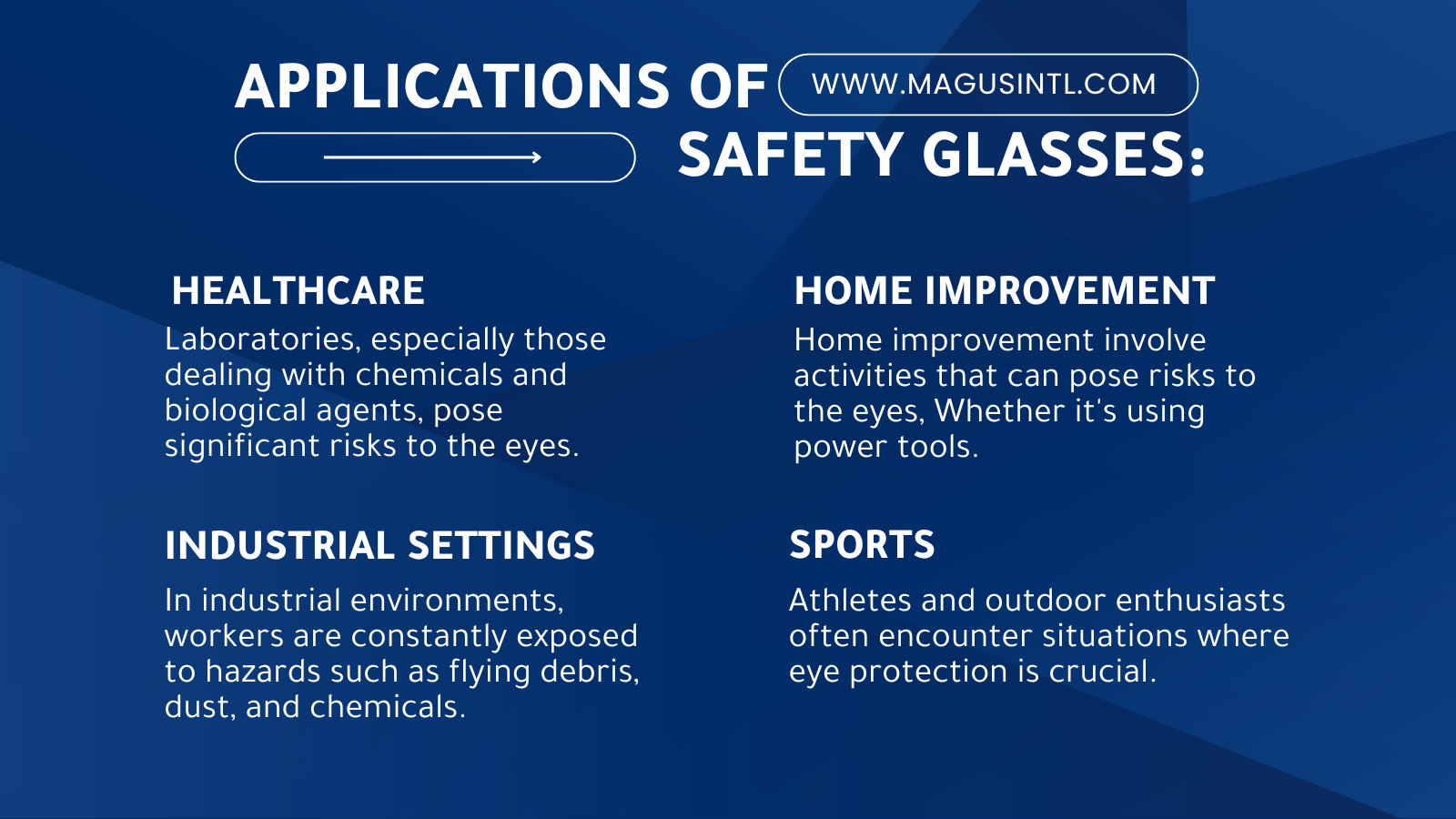
Applications of Safety Glasses
Industrial and Construction Settings
In industrial and construction environments, workers are constantly exposed to hazards such as flying debris, dust, and chemicals, Safety glasses are a mandatory protective measure in these settings, preventing eye injuries and ensuring compliance with safety regulations, Workers handling power tools, heavy machinery, and hazardous materials rely on safety glasses to protect their eyes from potential harm.
Laboratories and Healthcare
Laboratories, especially those dealing with chemicals and biological agents, pose significant risks to the eyes, Safety glasses and goggles provide essential protection against chemical splashes, fumes, and infectious materials, In healthcare settings, face shields and safety glasses protect medical professionals from bodily fluids and reduce the risk of infection.
Sports and Recreation
Athletes and outdoor enthusiasts often encounter situations where eye protection is crucial, Safety glasses designed for sports provide impact resistance and UV protection, safeguarding the eyes during activities such as cycling, skiing, and shooting, They enhance performance by offering clear vision and reducing glare.
Home Improvement and DIY Projects
Home improvement and DIY projects involve activities that can pose risks to the eyes, Whether it’s using power tools, cutting wood, or handling chemicals, safety glasses are essential for protecting the eyes from potential injuries, They provide peace of mind, allowing individuals to focus on their tasks without worrying about eye safety.
Selecting the Right Safety Glasses
Assessing the Environment
Choosing the right safety glasses involves assessing the specific hazards present in the environment, For instance, workers in construction sites may require impact-resistant glasses, while those in laboratories might need goggles to protect against chemical splashes, Understanding the risks helps in selecting the appropriate type of safety eyewear.
Ensuring Comfort and Fit
Comfort is a critical factor when selecting safety glasses, Ill-fitting glasses can cause discomfort and may not provide adequate protection, It’s essential to choose glasses that fit well and do not cause pressure points, Adjustable features, such as nose pads and temple arms, enhance comfort and ensure a secure fit.
Considering Lens Options
Different lens options are available to cater to specific needs, Clear lenses are suitable for indoor use, while tinted lenses provide UV protection for outdoor activities, Polarized lenses reduce glare, making them ideal for activities like fishing and skiing, Selecting the right lens type enhances protection and improves performance.
Compliance with Standards
Safety glasses must comply with industry standards to ensure they provide adequate protection, In the United States, ANSI Z87,1 is the standard for occupational and educational personal eye and face protection devices, Checking for compliance with relevant standards ensures that the safety glasses meet the necessary safety requirements.
Maintaining and Caring for Safety Glasses
Regular Cleaning
Maintaining clear vision requires regular cleaning of safety glasses, Using mild soap and water or specialized lens cleaning solutions helps remove dirt, debris, and smudges, It’s important to avoid using harsh chemicals or abrasive materials that can damage the lenses.
Proper Storage
Proper storage extends the lifespan of safety glasses, Storing them in a protective case when not in use prevents scratches and damage, It’s also advisable to keep safety glasses away from extreme temperatures and direct sunlight, which can degrade the materials over time.
Periodic Inspections
Regular inspections ensure that safety glasses remain in good condition, Checking for scratches, cracks, and other signs of wear and tear helps identify when it’s time to replace them, Damaged glasses may not provide adequate protection and should be replaced promptly.
Conclusion
Safety glasses are an essential component of personal protective equipment, offering vital protection to the eyes in various environments, From industrial settings to sports and recreation, safety glasses prevent injuries and enhance productivity, Technological advancements have made safety glasses more comfortable, durable, and effective, ensuring that they meet the needs of diverse applications, Selecting the right safety glasses involves assessing the environment, ensuring a proper fit, and complying with industry standards, Regular maintenance and care further extend their lifespan, providing reliable protection for years to come, As the saying goes, “Better safe than sorry” – investing in high-quality safety glasses is a small price to pay for the invaluable protection they offer to one of our most precious senses.
Frequently Asked Questions (FAQs) About Safety Glasses
1. Why are safety glasses important?
Safety glasses are crucial for protecting the eyes from potential injuries caused by flying debris, chemical splashes, and harmful radiation, They act as a barrier, preventing foreign objects from entering the eyes and causing damage, Safety glasses are especially important in workplaces with hazardous environments, such as construction sites, laboratories, and industrial settings.
2. What are the different types of safety glasses?
There are several types of safety glasses, including:
– Prescription Safety Glasses: Custom-made to fit the user’s vision prescription while providing eye protection.
– Non-Prescription Safety Glasses: Suitable for individuals with normal vision or those using contact lenses.
– Goggles: Offer a higher level of protection by creating a seal around the eyes, protecting against dust, fumes, and chemical splashes.
– Face Shields: Cover the entire face for maximum protection, used in environments with severe impact or hazardous materials.
3. How do anti-fog coatings work on safety glasses?
Anti-fog coatings prevent moisture buildup on the lenses, ensuring clear vision even in humid or high-temperature environments, This technology is particularly beneficial for workers in kitchens, laboratories, and outdoor settings where fogging can impair vision and reduce productivity.
4. Why is UV protection important in safety glasses?
Prolonged exposure to ultraviolet (UV) radiation can cause serious eye damage, including cataracts and macular degeneration, Safety glasses with UV protection block harmful rays, safeguarding the eyes, This is crucial for outdoor workers, athletes, and anyone spending significant time in the sun.
5. What materials are commonly used for impact-resistant safety glasses?
Modern safety glasses are typically made from high-impact materials such as polycarbonate and Trivex, These materials can withstand significant force without shattering, providing robust protection against flying debris, tools, and other hazards.
6. How do I choose the right safety glasses for my needs?
Choosing the right safety glasses involves:
– Assessing the Environment: Identify the specific hazards present in your environment.
– Ensuring Comfort and Fit: Select glasses that fit well and do not cause discomfort.
– Considering Lens Options: Choose lenses based on your needs, such as clear lenses for indoor use or tinted lenses for outdoor activities.
– Compliance with Standards: Ensure the safety glasses meet industry standards, such as ANSI Z87,1 in the United States.
7. How should I maintain and care for my safety glasses?
Proper maintenance and care include:
– Regular Cleaning: Use mild soap and water or specialized lens cleaning solutions to remove dirt and smudges.
– Proper Storage: Store safety glasses in a protective case when not in use to prevent scratches and damage.
– Periodic Inspections: Regularly check for scratches, cracks, and other signs of wear and tear, and replace damaged glasses promptly.
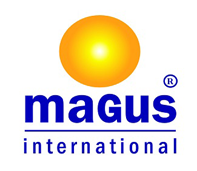
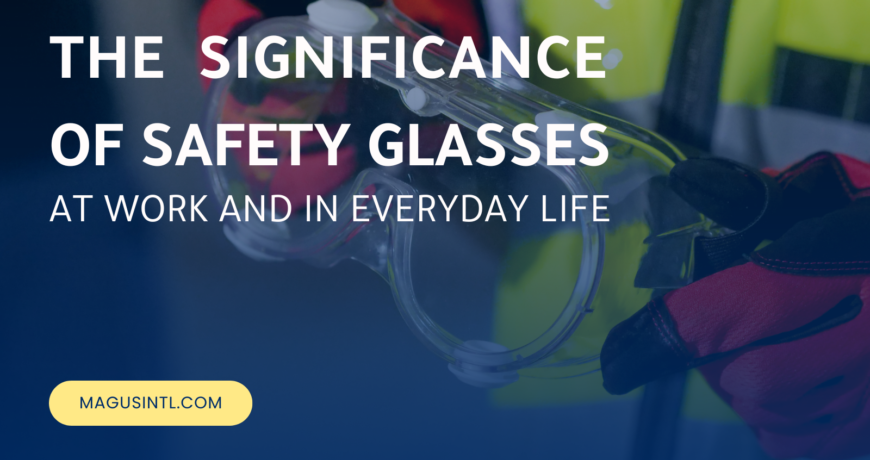

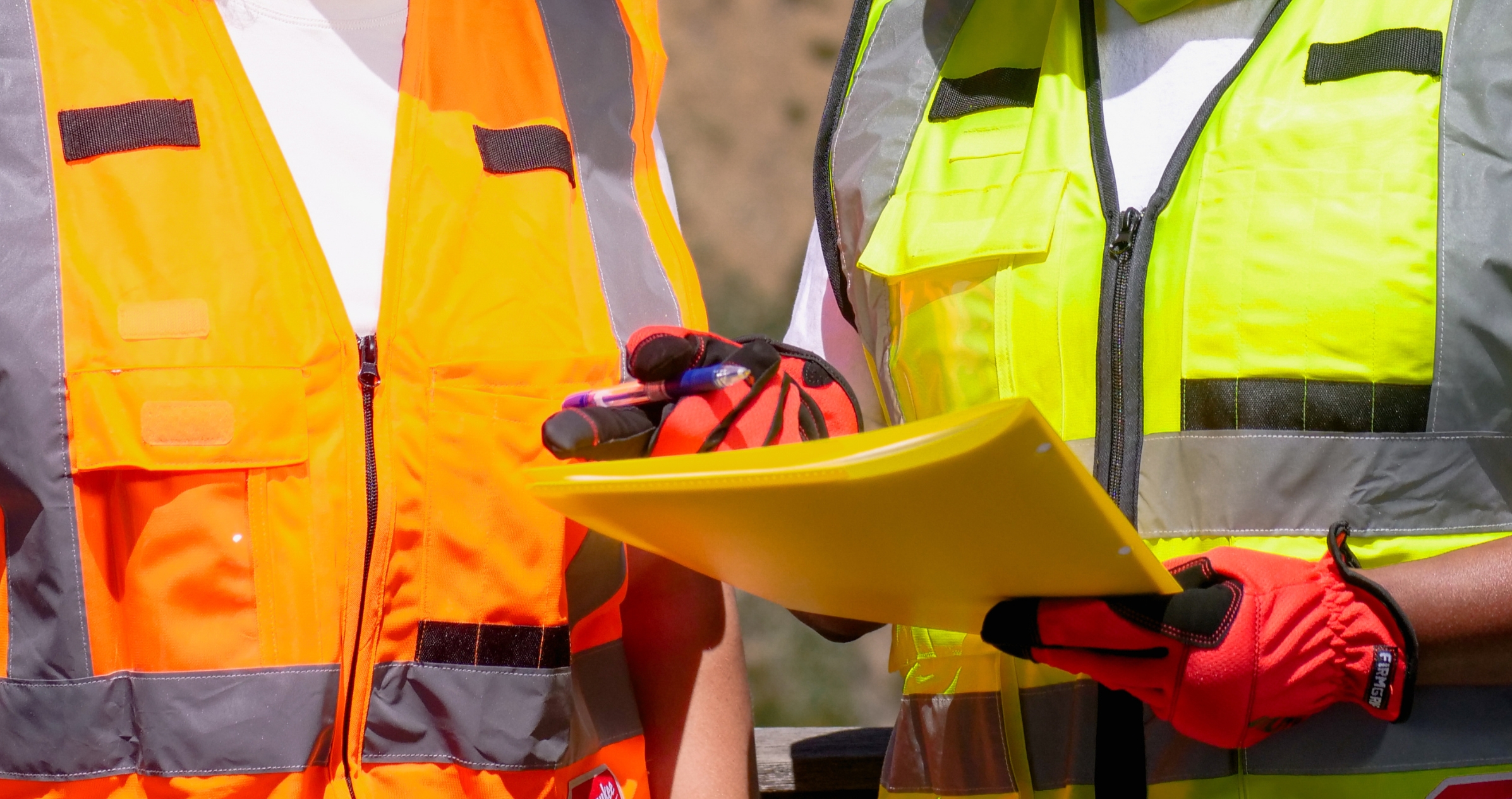
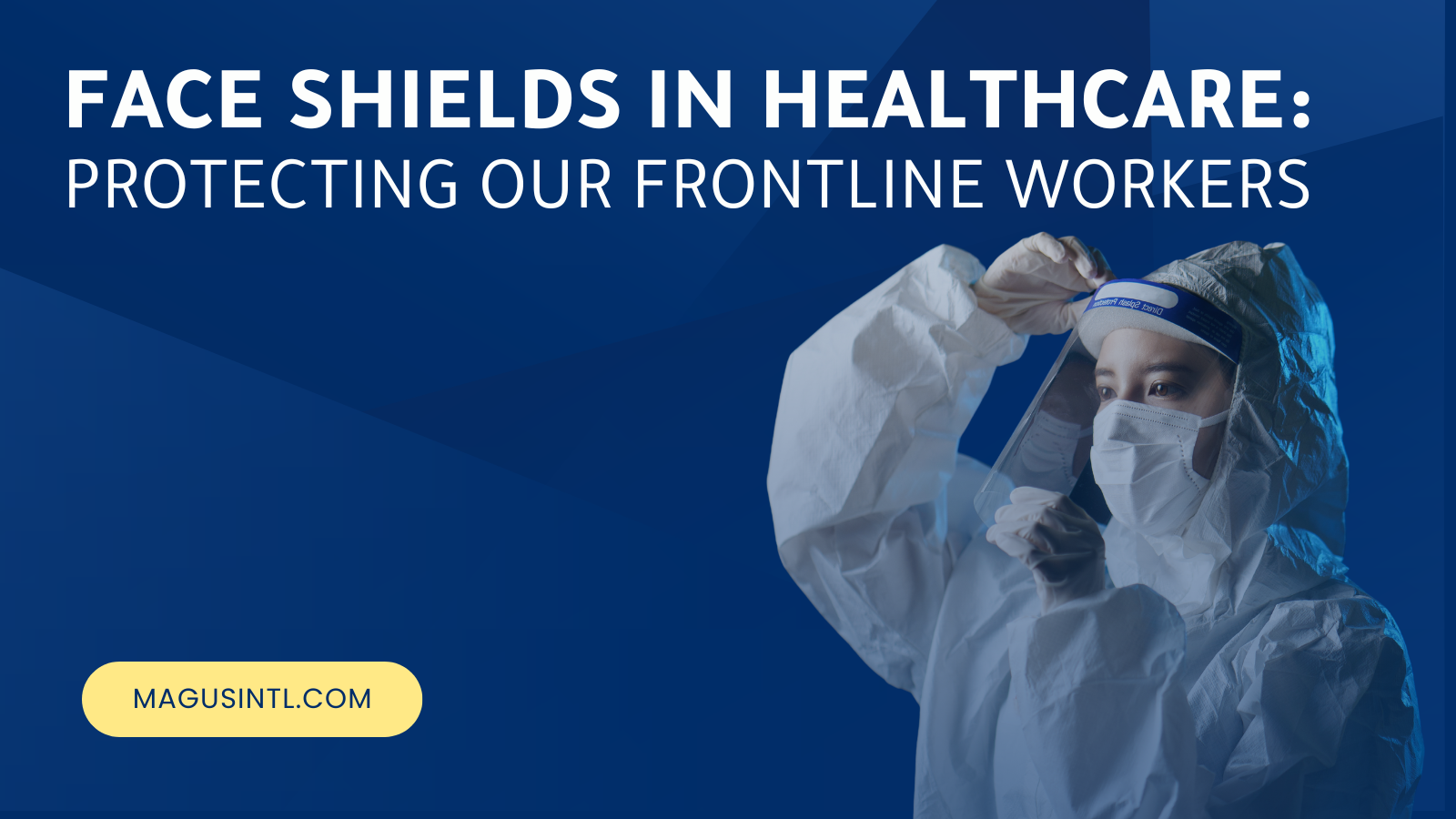
There are no comments